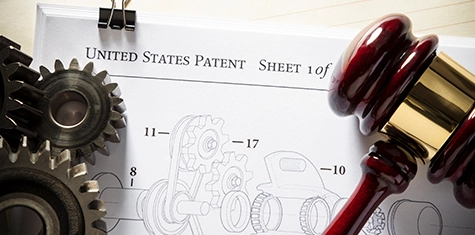An emerging trend in e-discovery concerns how courts should treat emails containing hyperlinks that reference other documents. The discovery challenges posed by hyperlinks or “modern attachments” within the Microsoft 365 environment are causing disputes among litigants.
What is the Difference Between Traditional Attachments and Hyperlinks?
With traditional emails and attachments, there is a clear family relationship: there is a parent email and a child attachment. Both the email and attachment will be received in the same condition as they were saved and sent.
Hyperlinks, or “modern attachments” within Microsoft 365, are not part of the underlying email message file. Rather, the hyperlink points to files that are stored in a location separate from the email, as opposed to in the email itself. Thus, storing the document separately from the email message allows for collaboration among team members to edit the document. Further, the hyperlink document generally points to the latest version of the document, not the version that existed at the time the hyperlink was created (i.e., the “as sent” version). Consequently, the content of the file contained in a hyperlink may be very different from the content of that same file at the time the underlying email was sent. In addition, trying to retrieve the “as sent” version of the hyperlinked document may be difficult or even impossible. As a result, there are a host of challenges to producing hyperlinked documents.
Should Hyperlinked Documents be Treated the Same as Emails with Attachments?
A recent federal court addressed the issue of how parties should treat hyperlinked documents. In re: Insulin Pricing Litigation, MDL No. 3080, 2024 WL 2808083 (D. New Jersey May 28, 2024). In Insulin Pricing Litigation, the court addressed several disputes regarding a proposed ESI protocol. One of the disputes centered around hyperlinks and “whether the definition of document families should include hyperlinks such that a producing party must maintain any document ‘family’ relationship for each hyperlink.” Id. at *7.
The plaintiffs argued that a producing party should produce linked documents with any affiliated family group. However, the defendants argued that plaintiffs’ proposal is technologically infeasible and would create undue burdens disproportionate to the needs of case. Id. The defendants also provided declarations from various e-discovery vendors stating that it was not feasible or practical to produce hyperlinked documents in family groups. Id.
The court agreed with the defendants and stated that “hyperlinks are not the same as traditional attachments.” Id. The court reasoned that the commercially available tools “are either not feasible whatsoever or unduly burdensome to apply to their respective data environments.” Id. at *8.
How Other Courts Have Addressed This Issue
Other federal courts seem to be in line with the decision from the Insulin Pricing Litigation:
- Nichols v. Noom Inc., No. 20-3677, 2021 WL 948646, at *3-4 (S.D.N.Y. Mar. 11, 2021)
- Stated that it did “not agree that a hyperlinked document is an attachment” and that “it is clear to this Court that there was no meeting of the minds on whether hyperlinks were attachments and this Court, when entering the order, did not view hyperlinks to be attachments. . . . In sum, the ESI order does not treat hyperlinked documents as attachments.”
- In re Meta Pixel Healthcare Litigation, No. 22-cv-03580, 2023 WL 4361131, at *1 (N.D. Cal. June 2, 2023)
- Found that “the commercially available tools plaintiffs suggest may be used for automatically collecting links to non-public documents have no or very limited utility in Meta’s data environments or systems, and even that limited utility (i.e. using the Microsoft Purview eDiscovery (Premium) tool to collect links to SharePoint and OneDrive cloud attachments in Microsoft Exchange environments) would disrupt Meta’s standardized workflow for ESI-related discovery processing across all of its platforms and systems. Accordingly, the ESI protocol should make clear that hyperlinked documents are not treated as conventional attachments for purposes of preserving a ‘family’ relationship in production.”
- In re Uber Tech., Inc., Passenger Sexual Assault Litig., No. 23-md-3084, 2024 WL 1772832, at *6 (N.D. Cal. Apr. 23, 2024)
- Resolved dispute in ESI Protocol over definition of attachments where parties agreed to include “modern attachments” but the Court specifically provided that the “definition does not obligate Uber to produce the contemporaneous version of Google Drive documents referenced by URL or hyperlinks if no existing technology makes it feasible to do so” (emphasis supplied).
Key Takeaways:
- The decisions above indicate that courts will not automatically treat hyperlinks like traditional attachments.
- Attorneys need to talk with their clients to understand the nature of their email environment and how to treat hyperlinks.
- Negotiating an ESI protocol that is clear as to how the parties are going to treat hyperlinks or modern attachments is critical so that parties do not agree to provisions that are not feasible or practical or are disproportionate to the needs of the case.



